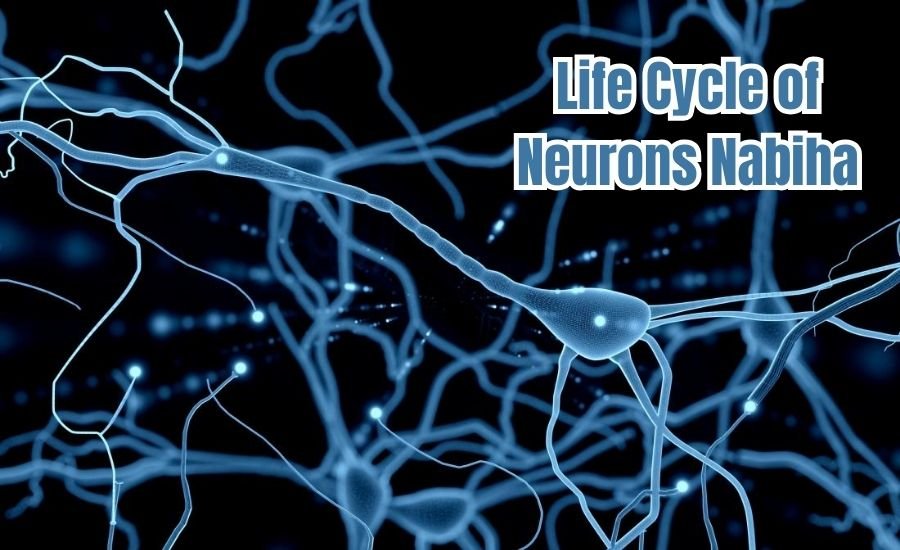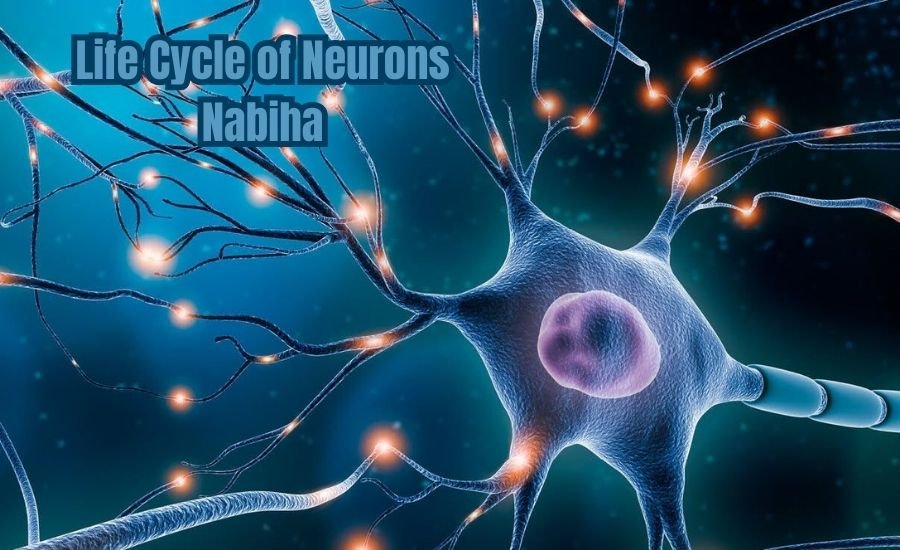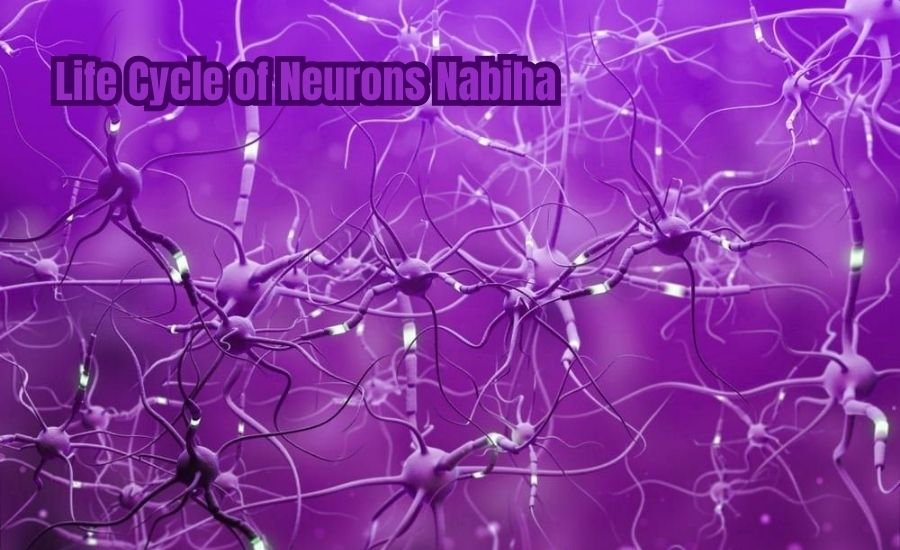Neurons, the fundamental units of the brain and nervous system, play a pivotal role in transmitting information throughout the body. Understanding the life cycle of neurons nabiha is crucial for grasping how the brain functions, how we learn and remember, and how neurodegenerative diseases impact us as we age. In this article, we will explore the life cycle of neurons nabiha, delving into each stage from birth to death, and highlighting the key aspects that contribute to neuronal health and function.
Neurogenesis: The Birth of Neurons
What is Neurogenesis?
Neurogenesis is the process through which new neurons are formed. This process is most active during embryonic development when neural stem cells differentiate into various types of neurons. It was once believed that humans were born with all the life cycle of neurons nabiha they would ever have. However, research has shown that neurogenesis continues throughout life, particularly in the hippocampus, a brain region associated with learning and memory.
- Early Development: During embryonic development, neurogenesis is highly regulated. Neural stem cells in specific brain regions, such as the subgranular zone in the hippocampus and the subventricular zone around the lateral ventricles, divide and differentiate into life cycle of neurons nabiha.
- Continued Neurogenesis: Even after birth, neurogenesis persists, though at a reduced rate. This ongoing production of new neurons plays a critical role in adapting to new experiences and maintaining cognitive functions throughout life.
The Role of Neural Stem Cells
Neural stem cells are the precursors to all neurons. These cells divide and either produce more stem cells or differentiate into progenitor cells that will eventually become life cycle of neurons nabiha. The health and function of these stem cells are crucial for maintaining a steady supply of new neurons.
- Stem Cell Division: Neural stem cells can divide asymmetrically, producing one stem cell and one progenitor cell. This process ensures that the pool of stem cells remains intact while generating new life cycle of neurons nabiha.
- Environmental Influence: Factors such as stress, age, and environmental stimuli can influence the rate of neurogenesis. A stimulating environment and physical exercise have been shown to enhance neurogenesis.
Growth and Development: From Neuron to Neural Network

Axon and Dendrite Formation
Once a neuron is born, it begins to extend its axon and dendrites. Axons are long, thread-like projections that transmit electrical impulses to other neurons, while dendrites receive signals from neighboring neurons. The development of these extensions is crucial for establishing connections within the brain.
- Axon Growth: The axon extends towards its target neurons, guided by molecular signals. This process involves the growth of specialized structures, such as growth cones, that help the axon navigate to its destination.
- Dendrite Development: Dendrites grow and branch out to receive inputs from other life cycle of neurons nabiha. The complexity and density of dendritic branches are crucial for forming robust neural networks.
Synaptogenesis: Building Connections
Synaptogenesis is the process of forming synapses, the junctions where life cycle of neurons nabiha communicate with each other. This stage is vital for developing the neural circuits that underlie all cognitive and motor functions.
- Formation of Synapses: Synaptogenesis involves the creation of synaptic connections between life cycle of neurons nabiha. This process is influenced by genetic factors and environmental experiences.
- Synaptic Plasticity: Synapses are not static; they undergo continuous remodeling in response to learning and experience. This plasticity allows the brain to adapt and reorganize itself throughout life.
Myelination: Speeding Up Communication
The Role of Myelin
Myelination is the process by which axons are coated with a fatty substance called myelin. This coating acts as insulation, increasing the speed and efficiency of electrical signal transmission between life cycle of neurons nabiha.
- Development of Myelin: Myelination begins during early development and continues into adolescence. The process involves the wrapping of myelin sheaths around axons, which enhances signal conduction.
- Impact on Brain Function: Efficient myelination is crucial for normal brain function. Delays in myelination can lead to developmental disorders and cognitive impairments.
The Importance of Myelination in Different Brain Regions
Different brain regions undergo myelination at varying rates, which influences their function and development.
- Early Myelination: Brain regions involved in basic functions, such as sensory processing and motor control, typically undergo early myelination.
- Later Myelination: Higher-order cognitive areas, including those involved in executive functions and decision-making, experience myelination later in development.
Functionality: Neurons at Work
Electrical Signaling
Neurons communicate through electrical impulses known as action potentials. These impulses travel along the axon and trigger the release of neurotransmitters at the synapse.
- Action Potentials: An action potential is a rapid change in electrical charge that travels down the axon. This process is essential for transmitting signals across long distances within the brain.
- Neurotransmitter Release: At the synapse, the action potential triggers the release of neurotransmitters, which bind to receptors on the neighboring neuron. This chemical signaling enables communication between life cycle of neurons nabiha.
Neurotransmitter Release and Signal Integration
Neurons receive inputs from multiple sources and integrate these signals to produce a response. This integration process is crucial for complex behaviors and cognitive functions.
- Signal Integration: life cycle of neurons nabiha combine inputs from various sources, including excitatory and inhibitory signals, to determine their output. This integration allows for nuanced and flexible responses to stimuli.
- Role in Behavior: The ability to integrate and process signals is essential for higher cognitive functions, such as problem-solving, decision-making, and emotional regulation.
Maintenance and Survival: The Lifespan of a Neuron

Cellular Maintenance
Neurons require ongoing maintenance to function properly. This maintenance involves repairing damaged components, managing energy production, and regulating the synthesis of proteins and neurotransmitters.
- Repair Mechanisms: The life cycle of neurons nabiha has specialized mechanisms for repairing damaged components, such as proteins and organelles. This maintenance ensures the continued health and function of the neuron.
- Energy Management: The life cycle of neurons nabiha has high energy demands due to their active signaling processes. Efficient energy management is crucial for maintaining neuronal health and preventing dysfunction.
The Role of Neurotrophic Factors
Neurotrophic factors are proteins that support the growth, survival, and function of life cycle of neurons nabiha. These factors help neurons cope with stress and injury.
- Types of Neurotrophic Factors: Various neurotrophic factors, such as brain-derived neurotrophic factor (BDNF), play critical roles in neuronal health. These factors promote neuronal survival and facilitate synaptic plasticity.
- Impact on Neuronal Health: Adequate levels of neurotrophic factors are essential for maintaining cognitive functions and protecting against neurodegenerative diseases.
Hope You Interesting: Teatime DizzyKitten
Aging and Degeneration: The Final Stages
Neuronal Aging
As neurons age, they undergo changes that can impact their function. Aging life cycle of neurons nabiha may experience a decline in synaptic plasticity and an increased susceptibility to damage.
- Decline in Synaptic Plasticity: Aging is associated with reduced synaptic plasticity, which can impair learning and memory. The ability of neurons to adapt to new experiences diminishes with age.
- Increased Vulnerability: Older neurons are more vulnerable to damage from oxidative stress and other factors, which can contribute to cognitive decline.
Neurodegenerative Diseases
Neurodegenerative diseases, such as Alzheimer’s, Parkinson’s, and Huntington’s disease, involve the progressive loss of neurons and their connections. These conditions lead to significant cognitive and motor impairments.
- Alzheimer’s Disease: Characterized by the accumulation of amyloid plaques and tau tangles, Alzheimer’s disease leads to memory loss and cognitive decline.
- Parkinson’s Disease: This condition involves the degeneration of dopaminergic neurons in the substantia nigra, resulting in motor symptoms such as tremors and rigidity.
- Huntington’s Disease: Huntington’s disease is caused by a genetic mutation that leads to the progressive loss of neurons in the basal ganglia, affecting movement and cognition.
Apoptosis: Programmed Cell Death
Apoptosis, or programmed cell death, is a natural part of the neuronal life cycle. This process is essential for removing damaged or unnecessary neurons.
- Role in Development: Apoptosis is crucial during development for eliminating excess neurons and refining neural circuits.
- Excessive Apoptosis: While apoptosis is necessary, excessive cell death can contribute to neurodegenerative diseases. Understanding the balance of apoptosis is important for developing strategies to protect neuronal health.
Conclusion: The Life Cycle Of Neurons Nabiha
The life cycle of neurons nabiha is a dynamic and intricate process that encompasses neurogenesis, growth, functionality, maintenance, and aging. Each stage plays a vital role in the overall functioning of the nervous system. Understanding these processes provides valuable insights into how the brain adapts to new experiences, maintains cognitive functions, and ages. As research continues to unravel the complexities of the neuronal life cycle, we gain a deeper appreciation for the resilience and adaptability of the human brain, as well as the importance of maintaining brain health throughout life.
FAQs about the Life Cycle of Neurons Nabiha
Q: What is neurogenesis?
A: Neurogenesis is the process of generating new neurons from neural stem cells. It occurs mainly in specific brain areas like the hippocampus and continues throughout life, contributing to learning and memory.
Q: Where do neurons originate in the brain?
A: Neurons are born in regions rich in neural stem cells, such as the subgranular zone of the hippocampus, the subventricular zone around the lateral ventricles, and the hypothalamus.
Q: How do neurons migrate in the brain?
A: Neurons migrate by following fibers of radial glia cells or using chemical signals. Only about a third of migrating neurons reach their intended destinations successfully.
Q: What is the role of myelin in neuronal function?
A: Myelin is a fatty substance that insulates axons, enhancing the speed and efficiency of electrical signal transmission between neurons.
Q: What are the different types of neurons?
A: The main types of neurons are sensory neurons (which carry signals from sensory organs to the brain), motor neurons (which control muscle movements), and interneurons (which connect other neurons within the brain and spinal cord).
Q: How does aging affect neurons?
A: Aging can reduce synaptic plasticity and increase vulnerability to damage, leading to cognitive decline and increased risk of neurodegenerative diseases.
Q: What is apoptosis in neurons?
A: Apoptosis is programmed cell death that helps remove damaged or excess neurons. While necessary for brain development, excessive apoptosis can contribute to neurodegenerative diseases.
Stay in touch to get more updates on TECH DENSER




